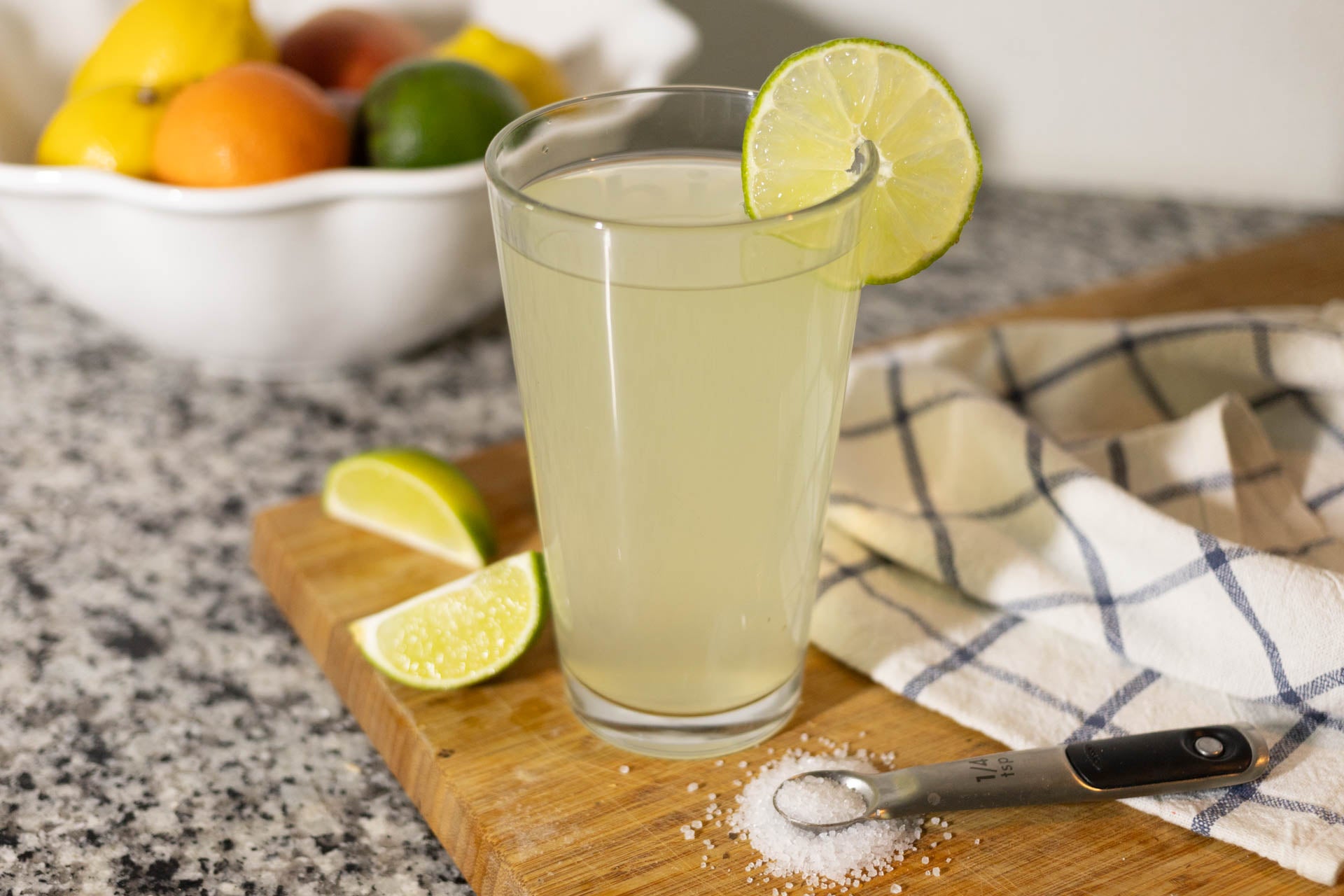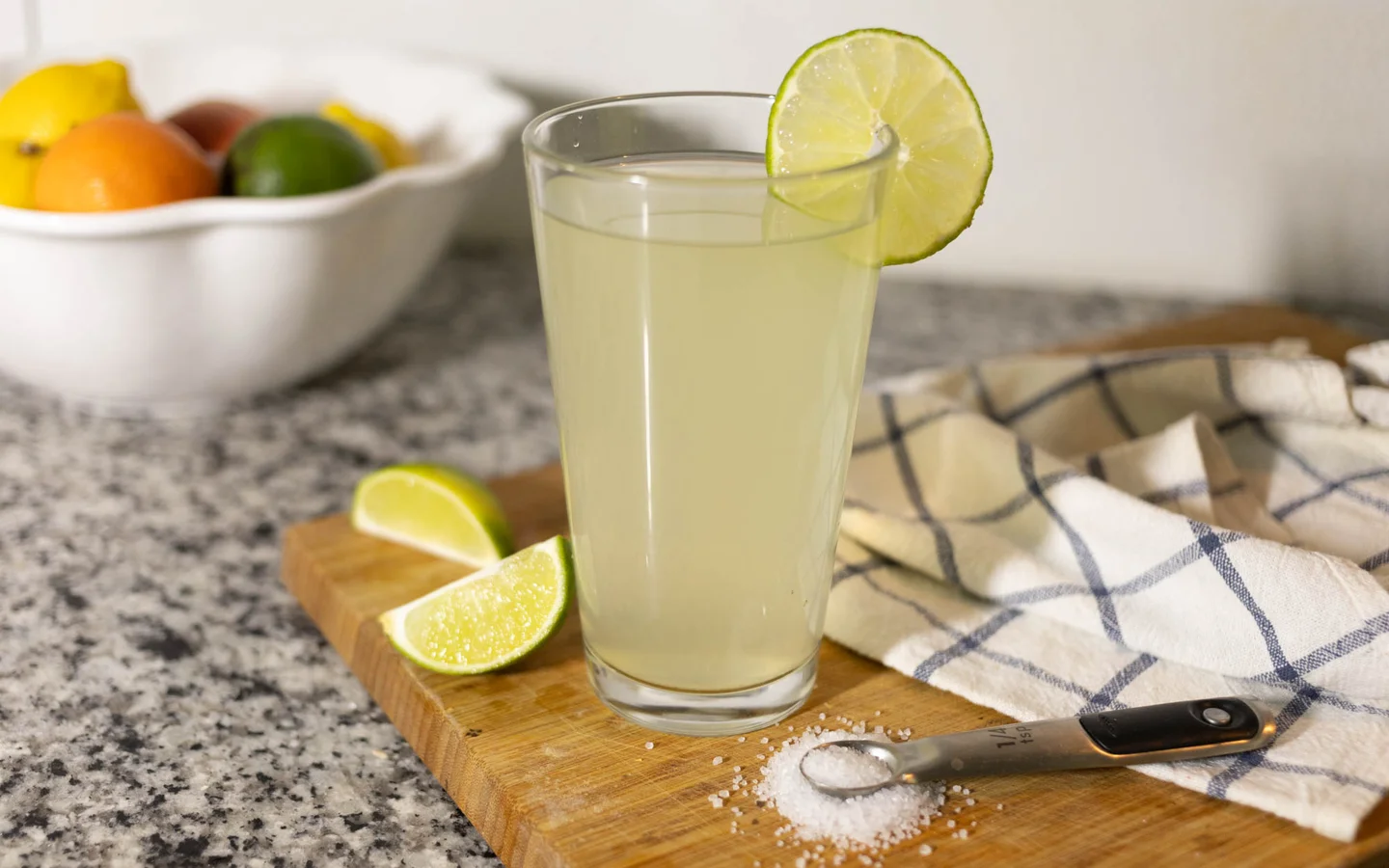2 easy homemade electrolyte drinks that actually work
When you’re dehydrated, whether as a result of a heavy workout or something else, like eating questionable food or partying a bit too hard, reaching out for a bottle of ice-cold water should help you recover. But depending on how long your body has been losing H2O, that alone may not be enough to replace what you’ve lost—you might also need electrolytes.
Sports drinks may be an option, but if you’re not participating in prolonged exercise, you don’t need all the extra carbs and calories—not to mention that red No. 40 food dye. Fortunately, you can easily craft your own homemade electrolyte drink for a cleaner hydration solution.
How to make a DIY electrolyte drink
Sports drinks and electrolyte mixes can be expensive. Making an electrolyte drink at home, on the other hand, only requires ingredients you probably already have in your fridge or pantry.
[Related: Hydration seems to be the key to aging better and living longer]
We asked two experts, Alex Larson, a registered dietitian who works with endurance athletes, and Matthew Kadey, also a registered dietitian and sports nutrition writer, to share their favorite recipes for homemade electrolyte drinks. These recipes contain between 300 to 700 milligrams of sodium per serving, which is enough to keep you properly hydrated after an hour-long heavy workout.
Whichever you choose to make, Larson recommends you start by consuming your DIY electrolyte drink only after exercising. This will make sure your body doesn’t have a negative reaction, as you don’t want to suffer from gastrointestinal issues during your run or workout.
Larson’s electrolyte water

Ingredients
- 8 ounces of coconut water
- 8 ounces of a fruit juice of your choice
- About 1/16 teaspoon of salt
Instructions
Shake or stir all the ingredients together to combine. Serve chilled or over ice for the most refreshing quaff.
Kadey’s Maple Orange Hydration Beverage

Ingredients
- 16 ounces of water
- 8 ounces of orange juice
- 2 tablespoons of maple syrup
- 1/16 to 1/8 teaspoon of salt
Instructions
Shake and combine all ingredients. You can add ice if you want.
What even are electrolytes?
Maintaining a healthy balance of water in the blood is critical for stabilizing your temperature (thermoregulation), and keeping healthy and efficient cardiovascular and muscle function.
Electrolytes are a group of micronutrients that includes sodium chloride, potassium, magnesium, and calcium. And while they’re all an important part of a healthy diet, when it comes to staying hydrated and maintaining the right amount of water in your blood, only one ingredient is indispensable for most non-endurance athletes: sodium chloride, also known as salt.
Sodium is the main electrolyte you lose when you sweat, making it the most important micronutrient to replace, Larson explains. And it doesn’t take much of a deficit to see negative effects. A 1994 study published in the International Journal of Sports Medicine, showed endurance athletes suffering from as little as 2 percent dehydration (meaning they’ve lost an amount of water equivalent to 2 percent of their body weight) may see impaired performance. Severe dehydration for adults begins at 10 percent, but you can start experiencing symptoms like headaches and dizziness at a 5 percent dehydration level.
Chugging copious amounts of water can sound like a solution, but it can also lead to hyponatremia. This condition results from a dangerously low concentration of sodium in the blood, which in extreme cases can cause potentially deadly pulmonary or cerebral edemas.
When to bust out an electrolyte drink
There are several ways to tell if you need electrolytes. If you are experiencing muscle cramps during exercise, don’t reach for a banana, as most bodies maintain a solid store of potassium. Instead, opt for some salt in the form of an electrolyte drink, as Larson explains there’s evidence that cramping may be a signal that you need a sodium boost.
If you’re running low on electrolytes, you may also experience a lack of energy or reduced performance, though not having enough carbohydrates to fuel your body may be a reason as well. This is why many store-bought electrolyte drinks and mixes contain sugar or other simple carbs, explains Kadey.
Finally, if you start feeling disoriented or confused, that could be a sign of dehydration or heat illness, and you should seek medical attention right away.
[Related: The truth about hydration hacks like IV therapies, alkaline water, and more]
If you’re not experiencing any symptoms, whether you need a bottle of water or an electrolyte drink to rehydrate, will depend on a host of factors. The average person sweats out between 17 and 67 ounces of perspiration per hour while physically active, which means you could be losing between 250 and 2,000 milligrams of sodium every 60 minutes. Where you fall within that range will depend on your body type and activity level (bigger and more active bodies need more electrolytes), the weather (higher humidity and temperature will result in more sweat and electrolyte loss), and the effort you’re exerting (more effort equals a higher sodium loss). Even altitude plays a part, and Larson recommends increasing fluid intake by 25 to 50 percent when exercising at altitudes over 10,000 feet.
Salty sweaters may need more sodium than the average athlete. If you regularly find white, chalky sweat rings on your workout clothes after they dry, you might consider pre-loading with an electrolyte beverage before you head outside, especially if you’re planning a long workout or you’ll be dealing with particularly hot weather.
Keep in mind that just because you’re sweaty doesn’t mean you need a sports drink. Your body maintains a reserve of sodium, so most of the time you can get away with staying hydrated with water if you’re exercising for under 90 minutes, or 60 if you tend to sweat profusely or work out in high humidity, says Kadey. Still, though—your homemade electrolyte drink will taste a lot better.
Source: https://www.popsci.com/diy/homemade-electrolyte-drink/
